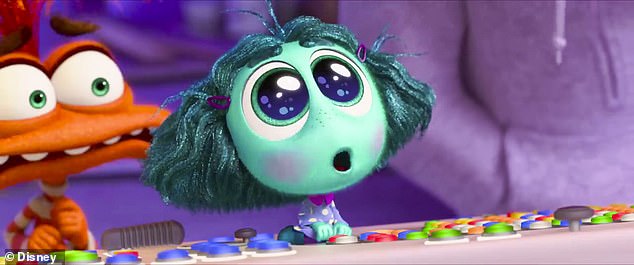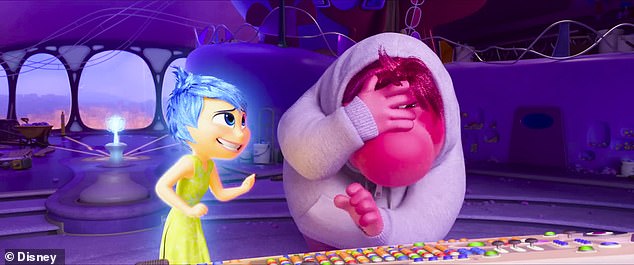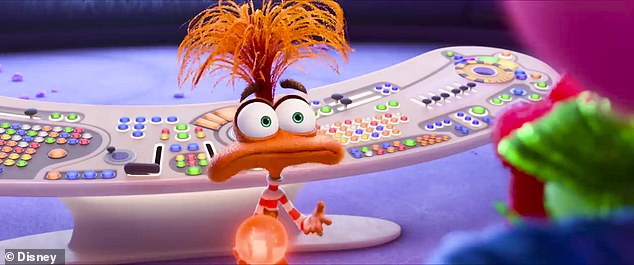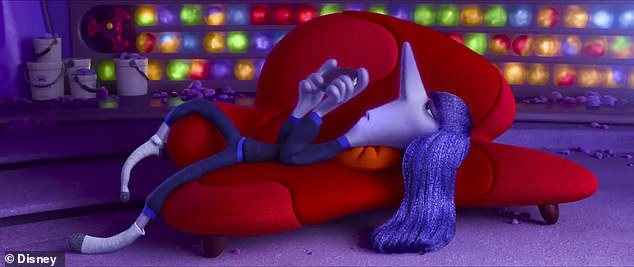How realistic is Inside Out 2? Neuroscientists weigh in as movie hits streaming for first time
The beloved Pixar film Inside Out 2 follows Riley as she deals with social pressure and puberty, but how accurate are the psychological aspects of the animated film?
Pixar first released Inside Out in 2015 to critical acclaim for its raw approach to children’s emotional turmoil. Nine years later, the sequel follows the main character to high school and the arrival of four new emotions.
Inside Out 2 came to Disney Plus for the first time this week, following its debut in June, when it broke box office records, grossing more than $1 billion in its first 19 days of release — the fastest ever for an animated film.
The production team consulted with numerous psychologists to ensure they accurately depicted the signs of the four new emotions in Riley’s teenage brain: fear, jealousy, shame and boredom – a feeling of boredom or dissatisfaction.
Psychologists have examined the emotional issues presented in Inside Out 2 to ensure they are presented accurately

Envy is depicted as a blue, starry-eyed character who just wants to fit in
Psychologists have conducted research into whether experiences such as shame are an emotion and whether a physiological process is involved.
People regularly experience 20 emotions, but the screenwriters of Inside Out 2 were told to focus only on the new and five primary emotions from the first film: joy, fear, sadness, anger and disgust.
Seeing Riley go from a 13-year-old teenager in the first film to a 15-year-old in high school in the sequel is “surprisingly accurate, especially when you look at it from the perspective of what it feels like for the teenager.” and for the family,” said clinical psychologist Lisa Damour.
“So [Riley] goes to bed one night and is a kid, and then the puberty alarm goes off on the console,” she says told NPR.
A team of clinical psychologists was brought in to determine what each emotion would look like if given form and how each emotion manifests.
When looking at shame, they first had to consider whether it was really an emotion and whether it had a clear expression that could be built into a character.
Dr. Dacher Keltner told it TIME that they determined that this was the case and then considered whether there was a physiological process underlying it – whether the emotion manifested itself outwardly.
Keltner, a neuroscientist who taught human emotions at Berkeley for 30 years, confirmed that this was the case, in the form of blushing – when your face turns red after extreme embarrassment.
“Shyness is an emotion within a social context that protects the norms that keep people in groups,” said Dr. Keltner.
“When you violate a social norm, you blush, and that blush makes people forgive you. It tells people that you are aware of social norms, that you made a mistake and that you are sorry.”
Keltner was consulted on what emotions should be included in the film, and promptly said 20, but was told that this would not be artistically possible and that they should limit it.

Shame (right) was added as an important part of reaching puberty and interacting with the opposite sex
The team decided to add jealousy to the repertoire of emotions that Riley goes through, and while it can be portrayed as wanting things that other people have, Pixar took a different stance.
‘New research is coming out of Europe that distinguishes between a malicious form of envy – perhaps undermining someone’s work or gossiping about them in an attempt to bring them down – with a more benign form of envy, in which the envious person works harder to earn that reward. ‘, said Dr. Keltner to TIME.
‘That kind of jealousy can be very good and produce great effects. Envy in the movie is not a villain, and they took great care to draw her that way.”
Instead, Jealousy is a little blue character with big sparkling eyes and a cute personality.
Fear was the most difficult to portray because Pixar had to take a serious emotion and portray it in a way that would be appropriate for children.
Unlike fear, anxiety projects what could go wrong in the future rather than what is happening now, and changes the way we perceive threats.
“It’s so good for kids to have a little cartoon character that embodies all those feelings,” Dr. Keltner told TIME.
“I can’t tell you how many parents said, ‘My little guy loves that Anger character!’ He looks exactly how my child feels.”
Research has shown that children who have suffered from mental instability, such as bullying, in their younger years are more likely to develop depression and anxiety.
Riley experiences these emotions during her big football game as she becomes overwhelmed with anxiety, pushing her to the brink of a panic attack.
“As psychologists, we see fear as an important, valuable, protective, and natural human emotion,” Damour told NPR.
‘We see it as a healthy version, the kind that accurately anticipates what could go wrong, has the right reaction to it, the right reaction force.
“And so in terms of her relationship with the other feelings, I think over the course of the evolution of the film, she’s gone from being kind of a villain on the outside to being treated as she should be — as an uncomfortable but valuable emotion.”
Annie Wright, a trauma therapist, shared it Psychology today that the football scene alone “will likely be terrifyingly familiar to any of us who live with anxiety and/or as a result of our trauma histories.”

Fear was one of the most well represented, showing the nerves that arise when we worry about the worst-case scenarios

Pixar added Ennui, which means boredom in French, to explain the emotional habit teenagers have of rolling their eyes and appearing disengaged
Boredom was the final emotion added to Inside Out 2 and is indicative of the typical reactions teenagers see on a daily basis: eye rolling, attitude and disregard for the rules.
‘Boredom tells you when you should do something else. Boredom teaches you what is important to you,” Dr. Keltner said.
The only downside to an otherwise factual film was the timeline for when these more advanced emotions hit.
According to the Organization for healthy childrenEmotions like fear, shame, and jealousy can actually occur much earlier than they were portrayed in the film, more akin to Riley’s age in the first Inside Out.
This emotion often “begins in the years just before puberty,” rather than when puberty hits, as depicted in Inside Out 2.
But timeline aside, the overarching theme of the emotions Riley felt, and her reactions to them, were iconically perfect, Wright said.
